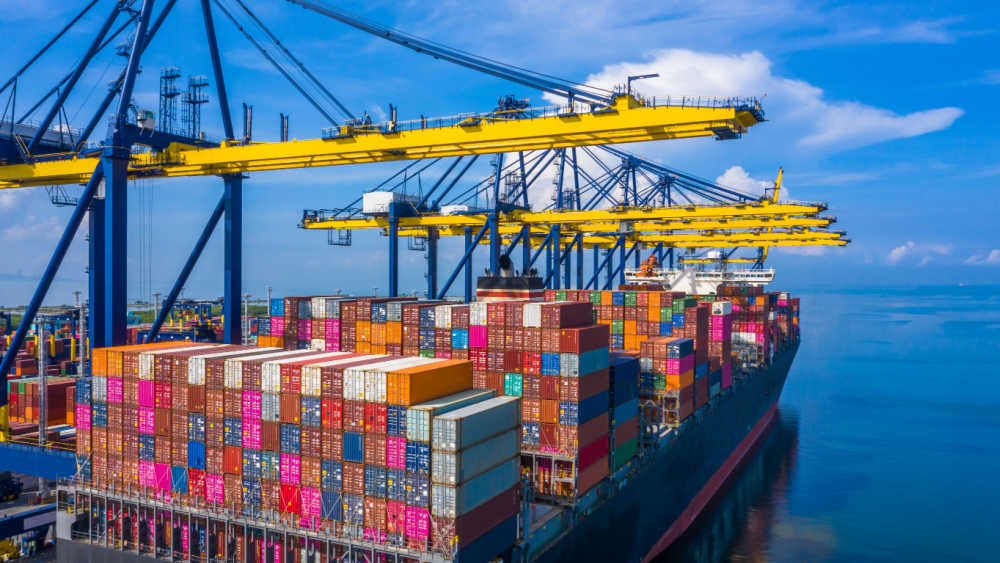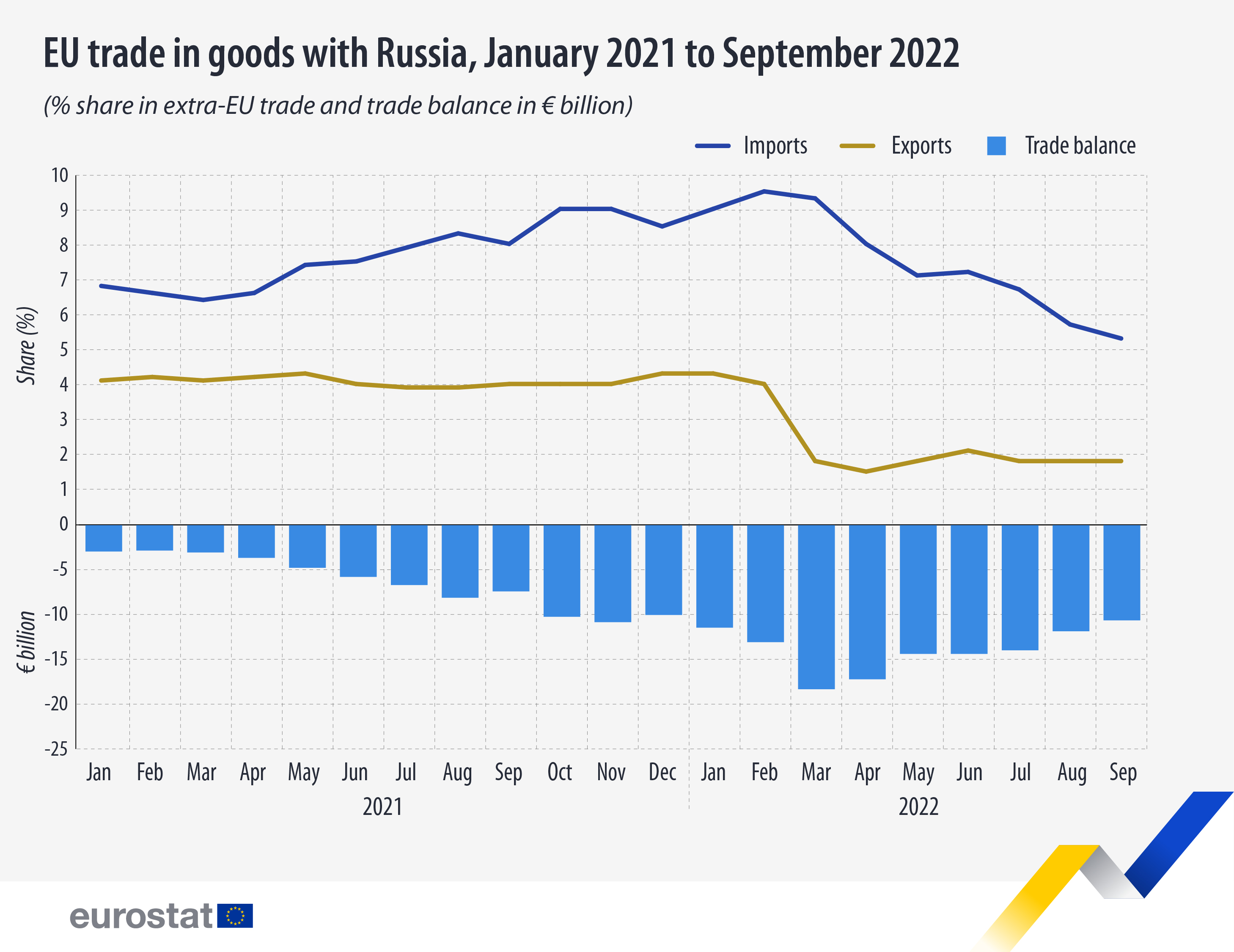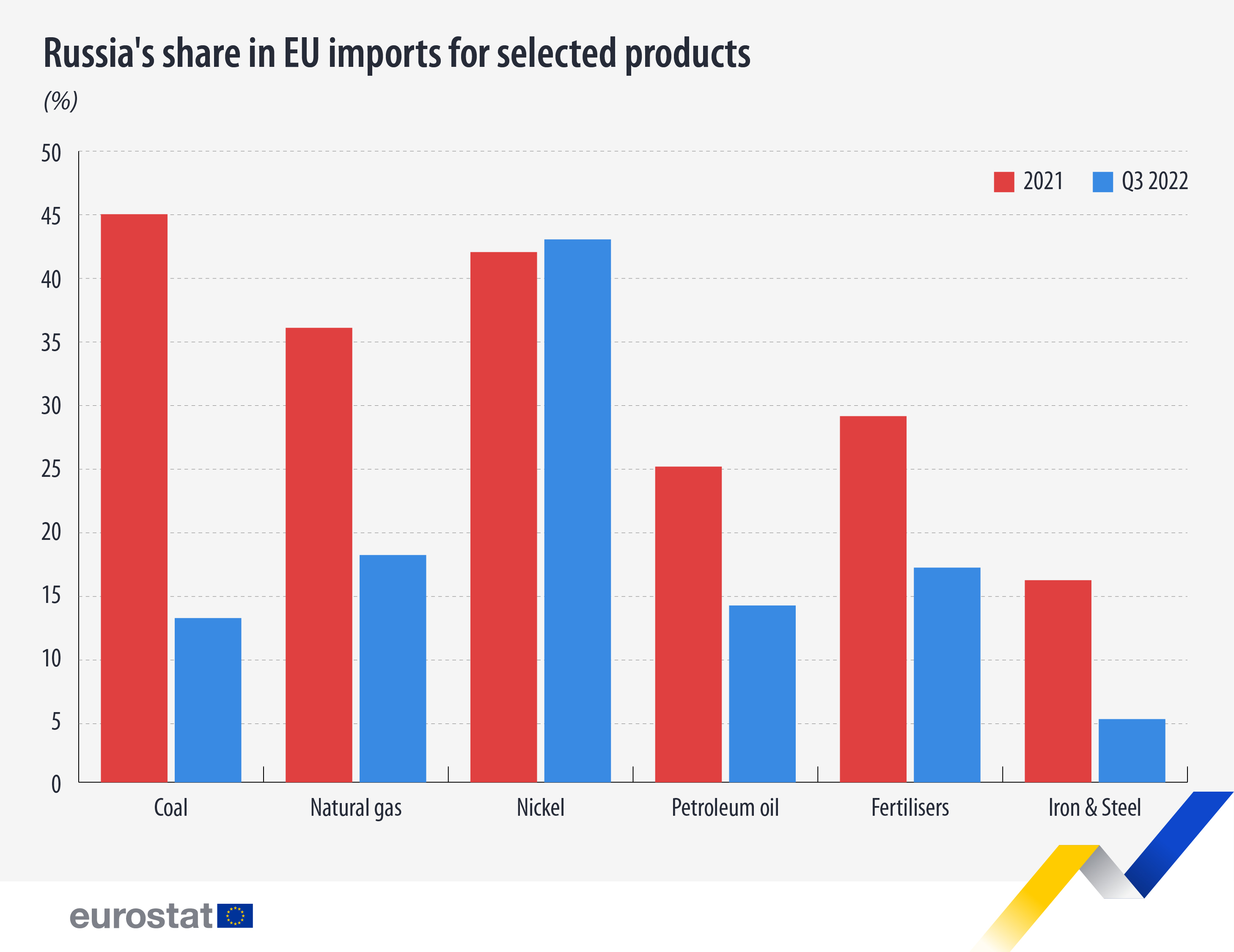EU trade with Russia declined strongly

EU trade with Russia has been strongly affected following Russia's invasion of Ukraine, with the EU imposing import and export restrictions on several products. The effects of these measures have been particularly visible in the latest months.
Considering seasonally adjusted values, both exports and imports dropped considerably below the levels prior to Russia's invasion. Russia’s share in extra-EU imports fell from 9.5% to 5.3% between February 2022 and September 2022. Over the same period, extra-EU exports to Russia dropped from 4.0% to 1.8%. The EU’s trade deficit with Russia peaked in March 2022 at €18.1 billion. It then progressively decreased and in September 2022 stood at €10.5 billion.
Source dataset: ext_st_eu27_2020sitc
When looking at Russia’s share in extra-EU imports for six key products, a strong decline is visible for coal, natural gas, petroleum oil, fertilisers, and iron & steel, while for nickel the share increased slightly. In particular, the highest drops have been recorded for coal (from 45% in 2021 to 13% in the third quarter of 2022), natural gas (from 36 % to 18 %), fertilisers (from 29% to 17%) and iron & steel (from 16% to 5%).
Source dataset: DS-045409
For more information
- Statistics Explained article on Russia-EU - international trade of main product groups
- Thematic section on the impact of the war in Ukraine
- Thematic section on international trade in goods
- Database on international trade in goods
If you have any queries, please visit our contact us page.


